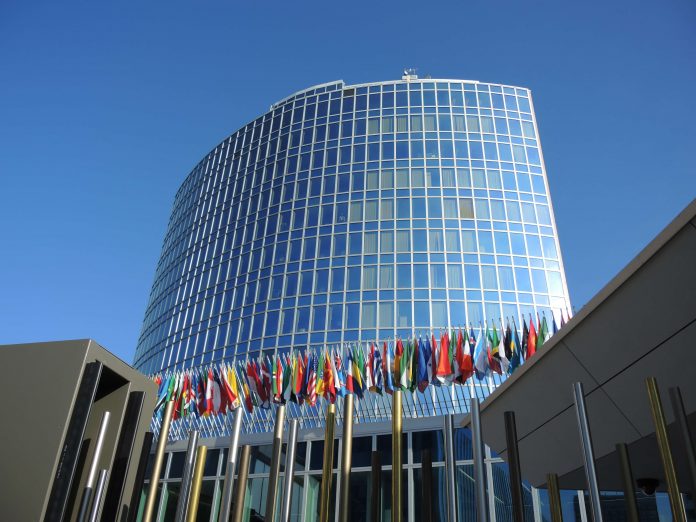This article has been written by Nagesh Karale pursuing a Diploma in US Intellectual Property Law and Paralegal Studies course from LawSikho.
Table of Contents
Introduction
Traditional Knowledge (TK) includes the long-standing customs, practices, skills, and innovations by indigenous and local communities that were developed from centuries of experience. Indigenous communities possess extensive knowledge of local ecosystems and biodiversity. It touches everyday life of the community.
Traditional knowledge systems have knowledge about various fields such as agriculture, forestry, environmental management, etc. It is an essential component of a community’s cultural or spiritual identity. TK. Especially, it is an ancient, oral, and changing knowledge that is not protected by conventional IP systems.
Understanding traditional knowledge
Traditional knowledge covers various fields. TK includes tools and techniques for hunting, animal husbandry, fishing, and agriculture. These practical skills are adapted to local environments.
Indigenous communities have extensive knowledge about local plants, their uses, and medicinal properties. This includes herbal remedies, plant-based dyes, and sustainable harvesting practices. The holistic healing practices often combine physical, mental, and spiritual aspects to promote the well-being of the local communities.
The knowledge of understanding constellations, tides, and natural signs was used for navigation during sea voyages. Traditional craftsmanship, such as pottery, weaving, and carving, passed down through apprenticeship. Indigenous communities have developed seasonal calendars, weather prediction, and sustainable resource management.
The oral traditions such as stories, legends, folklore, and proverbs that transmit cultural values, history, and wisdom across generations. Their cultural heritage, which holds spiritual importance, is often part of rituals, songs, and their worldview.
When a language is lost, the specific ways of knowing and understanding the world encoded in that language are also at risk of being lost. UNESCO estimates that 43% of the 6,000 spoken languages are at risk of disappearing.
WIPO’s initiatives in traditional knowledge protection
The World Intellectual Property Organisation (WIPO) collaborates with governments, non-governmental organisations (NGOs), and international bodies to address TK-related issues. These partnerships focus on policy development, technical assistance, and capacity-building to ensure comprehensive protection and promotion of TK. The defensive protection prevents others from claiming rights over traditional knowledge, while positive protection gives communities control and benefits from their knowledge.
WIPO undertakes various initiatives to empower local peoples. The Intergovernmental Committee (IGC) also proposes solutions that respect the rights of Indigenous communities.
WIPO supports the creation of databases and digital repositories that store and manage TK-related information to prevent unauthorised use and support benefit-sharing. The Traditional Knowledge Digital Library (TKDL) protects India’s ancient medicinal information by providing extensive multilingual information to patent examiners to prevent wrongful patent claims. It safeguards India’s rich heritage in traditional medicine.
WIPO’s work in developing tailored solutions for TCE protection is ongoing.
- In 1967, the Berne Convention was changed to include unpublished works by anonymous authors. This convention deals with the protection of literary and artistic works. Now traditional cultural expressions (TCEs) can be protected with copyright.
- For TCEs, GIs can protect traditional products (e.g., handicrafts, textiles, food) by ensuring that only products genuinely originating from a specific place.
- TCEs may be protected through collective trademarks, which represent a community’s identity and ensure fair use.
- TCEs often involve special designs (e.g., patterns, motifs) that can be protected as industrial designs.
- TK cannot be patented. For patenting, the novelty and/or inventive step criteria must be fulfilled.
- Trade secrets may protect TK. The main conditions are that it is kept secret and has actual or potential monetary value.
Legal framework for traditional knowledge protection
Following are existing international conventions for the protection of TK and TCEs.
- International instruments providing IP protection
- Berne Convention for the Protection of Literary and Artistic Works, 1971
- WIPO Performances and Phonograms Treaty, 1996 and the Beijing Treaty on Audio-visual Performances, 2012.
- International instruments relating to other forms of protection
- International Covenant on Civil and Political Rights,1966
- International Labour Organisation Convention No. 169 on Indigenous and Tribal Peoples in Independent Countries, 1989
- UNESCO Recommendation on Safeguarding of Traditional Culture and Folklore, 1989
- Convention on Biological Diversity (CBD), 1992, and its Nagoya Protocol, 2010
- International Convention for the Safeguarding of the Intangible Cultural Heritage, 2003
- Universal Declaration on Bioethics and Human Rights, 2005
- Convention on the Protection and Promotion of the Diversity of Cultural Expressions, 2005
- United Nations Declaration on the Rights of Indigenous Peoples (UNDRIP), 2007
- The Paris Agreement on Climate Change (Global Warming), 2015
The United Nations Environment Programme (UNEP) works on preserving traditional knowledge (TK), on indigenous peoples’ knowledge for environmental conservation, biodiversity, and endangered languages.
UNESCO plays a key role in protecting specific areas by designating them as biosphere reserves and World Heritage sites. These sites help preserve the rich biodiversity found in these regions.
Some countries are creating unique systems (Sui generis) to protect traditional knowledge (TK) and traditional cultural expressions (TCE). Sui generis systems may be needed, and it is crucial to identify gaps in current IP frameworks and learn from other countries’ experiences with such systems. It is important to safeguard cultural identity, prevent biopiracy, and consider environmental conservation and international laws.
Case studies of successful traditional knowledge protection
In 1995, the US Patent and Trademark Office (USPTO) granted a patent to the University of Mississippi Medical Centre for a method of using turmeric to promote wound healing. This decision sparked controversy as the Council of Scientific and Industrial Research (CSIR) of India challenged the patent’s validity.
The CSIR argued that the use of turmeric for wound healing was not novel, as it had been practiced in traditional Indian medicine for centuries. To support this claim, the CSIR cited ancient texts and prior research that referenced the use of turmeric for wound care. The organization also pointed out that turmeric is a common ingredient in many traditional Indian dishes and has been used for its medicinal properties for generations.
The USPTO carefully considered the CSIR’s arguments and conducted a thorough review of the available evidence. After evaluating the provided texts and research, the USPTO concluded that the use of turmeric for wound healing was indeed not novel and that the University of Mississippi Medical Centre’s patent was invalid. The USPTO’s decision was a significant victory for the CSIR and for the preservation of traditional knowledge and practices.
The USPTO’s decision also raised important questions about the patenting of traditional knowledge. It highlighted the need for careful consideration when granting patents for inventions that are based on traditional practices and knowledge systems. The USPTO’s decision in this case set a precedent for future patent applications related to traditional knowledge and helped ensure that traditional knowledge is recognized and respected in the global patent system.
Samoan traditional healers helped develop prostratin medicine. It is an anti-AIDS compound from the mamala tree. Their knowledge guided researchers in finding this treatment. The benefit-sharing agreement ensures that the village and healers’ families receive revenue from prostratin. The benefit-sharing agreement will also fund further HIV/AIDS research and make the drug available to developing countries at low cost or for free.
In South India, the Kani tribes have extensive knowledge of medicinal plants. They helped develop a sports drug called Jeevani. This sports drug is made from the Arogya pacha plant, which helps with stress and fatigue. Indian scientists collaborated with the tribes to identify the active ingredients. They patented the technology and assigned the rights to Arya Vaidya Pharmacy, Ltd., a company specialising in Ayurvedic medicines. The profits from the drug were shared with the Kani tribes.
In the heart of the Peruvian Amazon, a remarkable chapter in Indigenous self-determination unfolded with the formation of the Wampis Nation. This autonomous territorial government, established in 2018, stands as a beacon of Indigenous sovereignty and environmental stewardship.
Spanning nearly 14,000 square kilometers, the Wampis Nation encompasses the ancestral lands of the Wampis people, who have safeguarded their traditions, cultures, and livelihoods for generations. The creation of this autonomous government was driven by a profound desire to protect their way of life from the encroaching threats of extractive industries and development.
The Wampis Nation operates on principles of self-governance, where the Indigenous Wampis people have the authority to make decisions concerning their lands, resources, and future. This autonomous government is a testament to the resilience and determination of Indigenous communities to preserve their cultural identity, traditional knowledge, and sustainable practices.
At the core of the Wampis Nation’s governance structure is a deep understanding of the interconnectedness between the environment and the well-being of their people. They recognise that their ancestral lands hold immense ecological significance, harbouring diverse ecosystems and a myriad of plant and animal species.
The Wampis Nation has implemented various initiatives to promote sustainable resource management and protect biodiversity. They have established community-managed conservation areas, implemented sustainable agriculture practices, and developed ecotourism programs that respect the natural environment and cultural heritage of the region.
The formation of the Wampis Nation has not been without its challenges. The autonomous government has faced opposition from external forces, including corporations and government entities with vested interests in exploiting the region’s resources. Despite these obstacles, the Wampis people have remained steadfast in their commitment to defending their rights and preserving their ancestral lands.
The Wampis Nation serves as an inspiring model of Indigenous self-determination and environmental stewardship. It demonstrates the capacity of Indigenous communities to govern their territories effectively, protect their cultural heritage, and contribute to global efforts for sustainable development and biodiversity conservation.
As the world grapples with the urgent need to address climate change and protect the environment, the Wampis Nation offers valuable lessons in how Indigenous knowledge and traditional practices can contribute to a more sustainable and equitable future for all.
Digital technology-based digital storytelling products use augmented reality to share stories of Aboriginal peoples in Australia. Users point their device at specific symbols or sites that trigger 3D animations that tell the stories. This helps preserve culture and engages younger generations.
In India, the Honey Bee Network involves farmers, NGOs, academicians, and indigenous people. Honey Bee showcases farmers’ solutions for crop diseases, pests, and conservation. It promotes sustainable agriculture and income generation.
Facilitating access and benefit-sharing agreements
The Intergovernmental Committee (IGC) is a body under WIPO. It focusses on negotiating international laws.
WIPO collaborates with the Food and Agriculture Organisation of the United Nations (FAO) to ensure that IP systems support the goals of the International Treaty on Plant Genetic Resources for Food and Agriculture (ITPGRFA- The International Seed Treaty) which focuses on plant genetic resources for benefit-sharing.
WIPO also collaborates with the Convention on Biological Diversity (CBD) 1992 to address the interface between IP and genetic resources, including traditional knowledge. WIPO’s work aligns with the Nagoya Protocol which is a 2010 supplementary agreement to the CBD. It is contributing to the conservation and sustainable use of biodiversity.
Capacity building and empowerment
WIPO’s capacity-building and training programs cover various aspects, such as documenting TK, navigating the IP system, and leveraging IP tools for economic development. Women play a key role in passing down traditional knowledge in their communities. Local Community Women Entrepreneurs focusses on empowering women through practical IP support such as providing training, mentoring, and matchmaking programs on IP.
WIPO offers practical support in areas such as branding, certification marks, and geographical indications, which can enhance the marketability of products derived from TK.
WIPO celebrates the creativity of young Indigenous Peoples by encouraging impactful photographic storytelling. This year’s (2024) theme is “Indigenous Peoples’ Ways of Healing and Well-Being: Honouring Our Ancestors’ Wisdom and Knowledge”.
WIPO offers specialised courses related to traditional cultural expressions (TCEs) through its Distance Learning Program. These courses are free to indigenous communities.
WIPO organises webinars, workshops, and conferences to engage various stakeholders and promote the value of TK. WIPO publishes simple guides, manuals, and resources tailored to their needs. WIPO also helps entrepreneurs from these communities to use intellectual property tools for their businesses.
International collaboration and partnerships
WIPO works with governments and NGOs on IP policy development, training programs, and treaty negotiations. It supports innovation and capacity building in developing countries. However, the varying mandates and differing views of member states have slowed progress.
The SOLUTION project in Fredericton, New Brunswick, Canada, aims to empower Indigenous learners by integrating traditional knowledge with modern technology. Through this initiative, learners gain access to culturally grounded educational resources, language tools, and community-driven apps. The project blends tradition and technology. It improves education, preserves cultural heritage, and supports community well-being. Massachusetts Institute of Technology (MIT) Solve helps similar projects for Indigenous communities in the U.S. and Canada. They focus on sustainable energy and climate resilience.
Indigenous reindeer herders in the Arctic are struggling with climate change and the encroachment of oil and gas development projects. The Eurasian Association of Liberal Arts Teachers (EALAT) project, in partnership with NASA, uses satellite imagery and GIS to help these communities monitor environmental changes and develop adaptive strategies.
In Australia, the International Savanna Fire Management Initiative (ISFMI) combines traditional practices with modern science. They conduct early burns to reduce fuel loads and prevent destructive wildfires. This approach lowers greenhouse gas emissions and creates opportunities in the carbon market.
Moreover, majority of the population in Africa and India rely on ancient medicine for their healthcare needs. The Foundation for Revitalisation of Local Health Traditions (FRLHT) in Bangalore researches medicinal plants and ancient Ayurvedic knowledge to improve healthcare in rural and urban India.
Future directions and emerging trends
It is difficult to protect traditional knowledge (TK) with existing laws. Existing IP systems focus on written records. Most of TK is passed down orally, which makes it hard to protect it under existing IP systems. TK belongs to communities and lacks clear ownership structures. Western IP laws may not fit well with indigenous cultures. Special laws should respect traditions, culture,, and collective ownership.
The United Nations Sustainable Development Goals (SDGs) consist of 17 interconnected objectives, including No Poverty, Zero Hunger, urgent climate change measures, and protection and sustainable management of oceans, terrestrial ecosystems, forests, and biodiversity.
These SDGs are aimed at addressing global challenges and improving the well-being of people and the planet. Indigenous knowledge assists communities in adapting to climate change and boosting food production. Traditional knowledge also provides guidance for sustainable land management and innovations in scientific research.
The Kunming-Montreal Global Biodiversity Framework (GBF) 2022 was agreed upon at the 15th Conference of Parties (COP 15). This framework aims to help achieve the Sustainable Development Goals. It sets a road map with 4 goals for 2050 and 23 targets for 2030. COP 15 also adopted a package to support the GBF’s implementation.
India has taken proactive steps to safeguard its rich traditional knowledge through comprehensive legal frameworks. The Biological Diversity Act of 2002 serves as a critical instrument in preserving India’s biodiversity and ensuring the equitable sharing of benefits arising from its utilization. This act recognises the value of traditional knowledge associated with biological resources and acknowledges the rights of indigenous communities over their traditional knowledge. It establishes a mechanism for prior informed consent and benefit-sharing when accessing biological resources or associated traditional knowledge.
Furthermore, the Protection of Plant Varieties and Farmers’ Rights Act of 2001 aims to protect the rights of farmers and plant breeders while promoting the development of new plant varieties. This act recognises the role of farmers in conserving and improving plant genetic resources and ensures that they receive fair compensation for their contributions. It also provides a framework for the registration and protection of new plant varieties, encouraging innovation in the agricultural sector.
Additionally, the Geographical Indications of Goods Act of 1999 plays a crucial role in protecting the unique characteristics and reputation of certain products associated with specific geographical locations. This act safeguards the traditional knowledge and skills associated with the production of these products and prevents unauthorised use of geographical indications. It helps promote the economic well-being of producers and artisans while preserving the cultural heritage associated with these products.
These legal frameworks collectively contribute to the protection and preservation of India’s traditional knowledge. They recognise the value of traditional knowledge and ensure that indigenous communities and farmers benefit from its utilization. By establishing clear rights and responsibilities, these laws help promote sustainable development and preserve India’s rich cultural heritage.
Conclusion
Traditional knowledge (TK) is the intellectual creation of indigenous peoples and local communities through close observations of nature and experimentation. TK is passed on from generation to generation within a community. It touches the everyday lives of indigenous peoples. Many modern researchers and pharmaceutical industries have been making progress by utilising TK and genetic resources to produce novel pharmaceutical medicines.
WIPO plays a pivotal role in protecting traditional knowledge. It ensures that the rights and interests of indigenous and local communities are safeguarded.
References
- https://www.wipo.int/tk/en/
- https://www.wipo.int/wipo_magazine/en/2011/03/article_0002.html
- https://www.wipo.int/wipo_magazine/en/2017/01/article_0003.html
- https://link.springer.com/article/10.1007/s10806-010-9249-3
- https://www.wipo.int/tk/en/engagement.html#:~:text=WIPO%E2%80%99s%20engagement%20with%20indigenous%20peoples%20and%20local%20communities,traditional%20knowledge%20%28TK%29%20and%20traditional%20cultural%20expressions%20%28TCEs%29
- https://www.wipo.int/edocs/pubdocs/en/wipo_pub_933_2020.pdf
- https://www.intepat.com/blog/a-sui-generis-system-of-ip-protection-for-traditional-knowledge/
- https://www.wipo.int/edocs/pubdocs/en/wipo_pub_transition_9.pdf
- https://www.cambridge.org/core/blog/2024/01/24/traditional-knowledge-protection-leveraging-kunming-montreal-global-biodiversity-framework-adoption-in-wipo-igc-negotiations-2024/
- https://www.wipo.int/edocs/pubdocs/en/wipo_pub_transition_9.pdf
 Serato DJ Crack 2025Serato DJ PRO Crack
Serato DJ Crack 2025Serato DJ PRO Crack










 Allow notifications
Allow notifications



